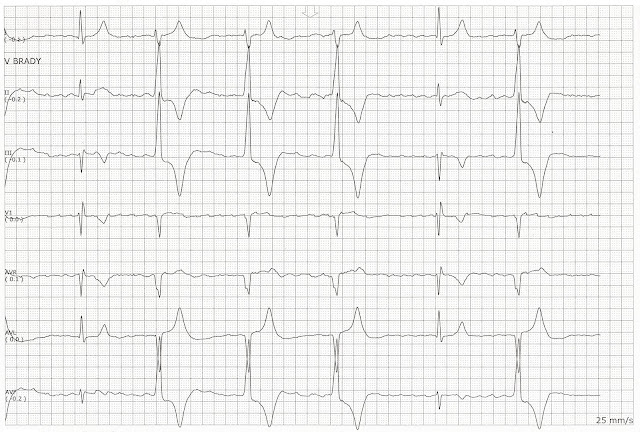Identify the following rhythms. 1. 2. 3. 4. 5. Answers 1. Normal sinus rhythm The rhythm is regular with a calculated rate of 78/min. There are uniform, upright P waves before each QRS complex. No ectopy is noted. PR: .12, QRS, .08 sec, QT: .28 sec. 2. Normal sinus rhythm with PACs The rhythm is irregular due to some PACs. The rate is 90/min. There are upright P waves before each QRS complex. The P waves are not uniform in shape. There are some atrial ectopic beats present: complexes 3, 5, and 11. The R-R interval on these beats is shorter than the surrounding sinus beats. In addition the P wave morphology and the PR intervals also differ. PR: .12 sec, QRS: .08 sec, QT: .32 sec. 3. Normal sinus rhythm with PVCs The rhythm is irregular due to the PVCs. The rate is 70/min. The P waves are upright and uniform on the sinus beats. There are two PVCs of slightly different














